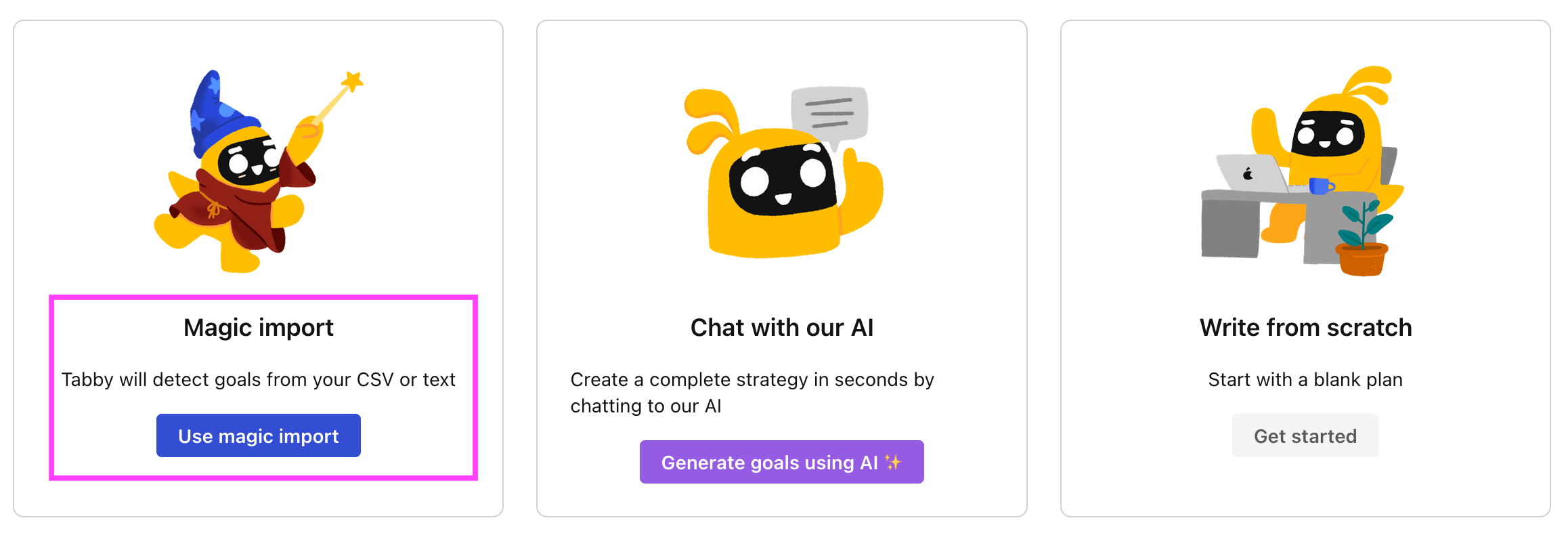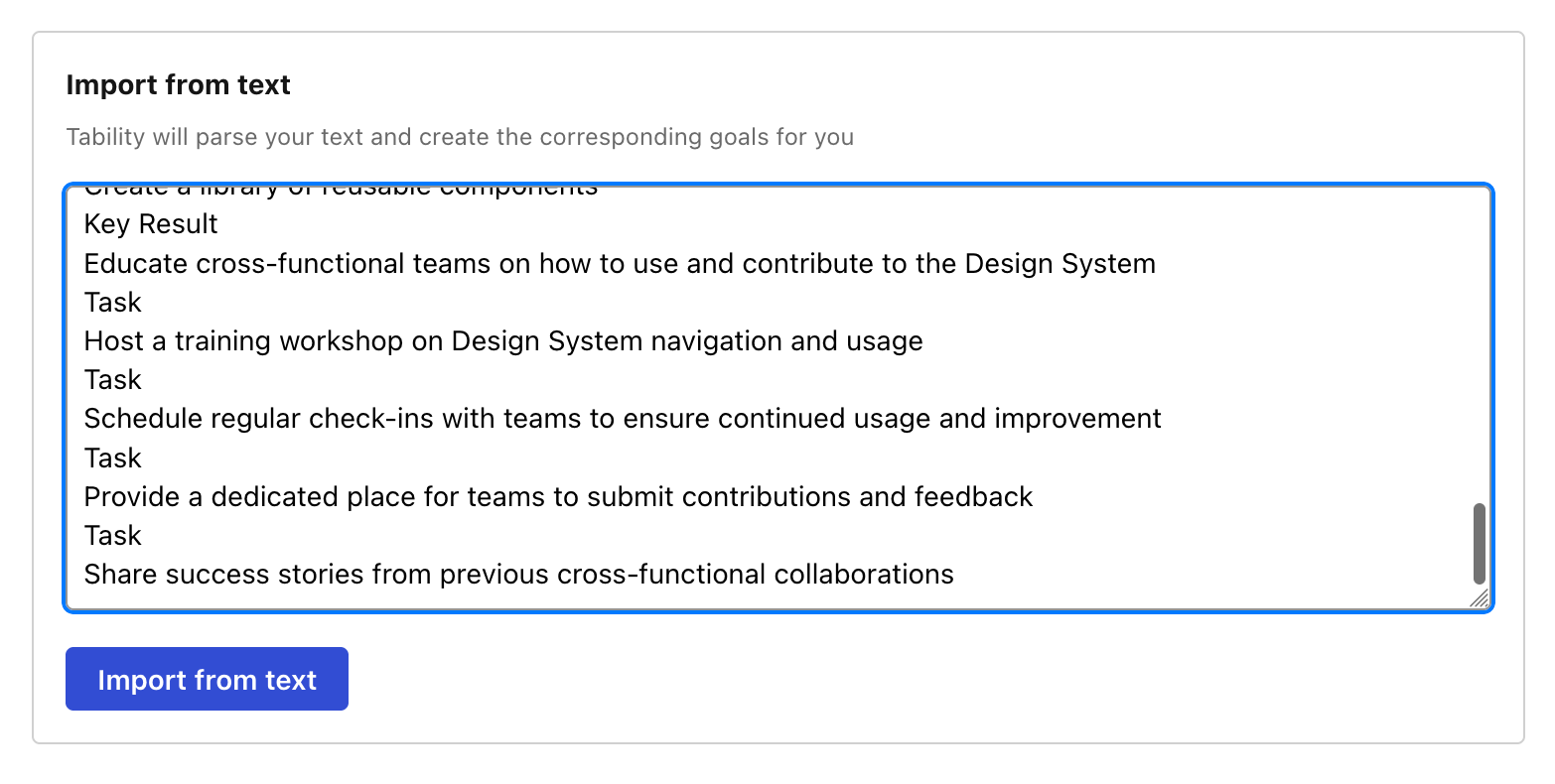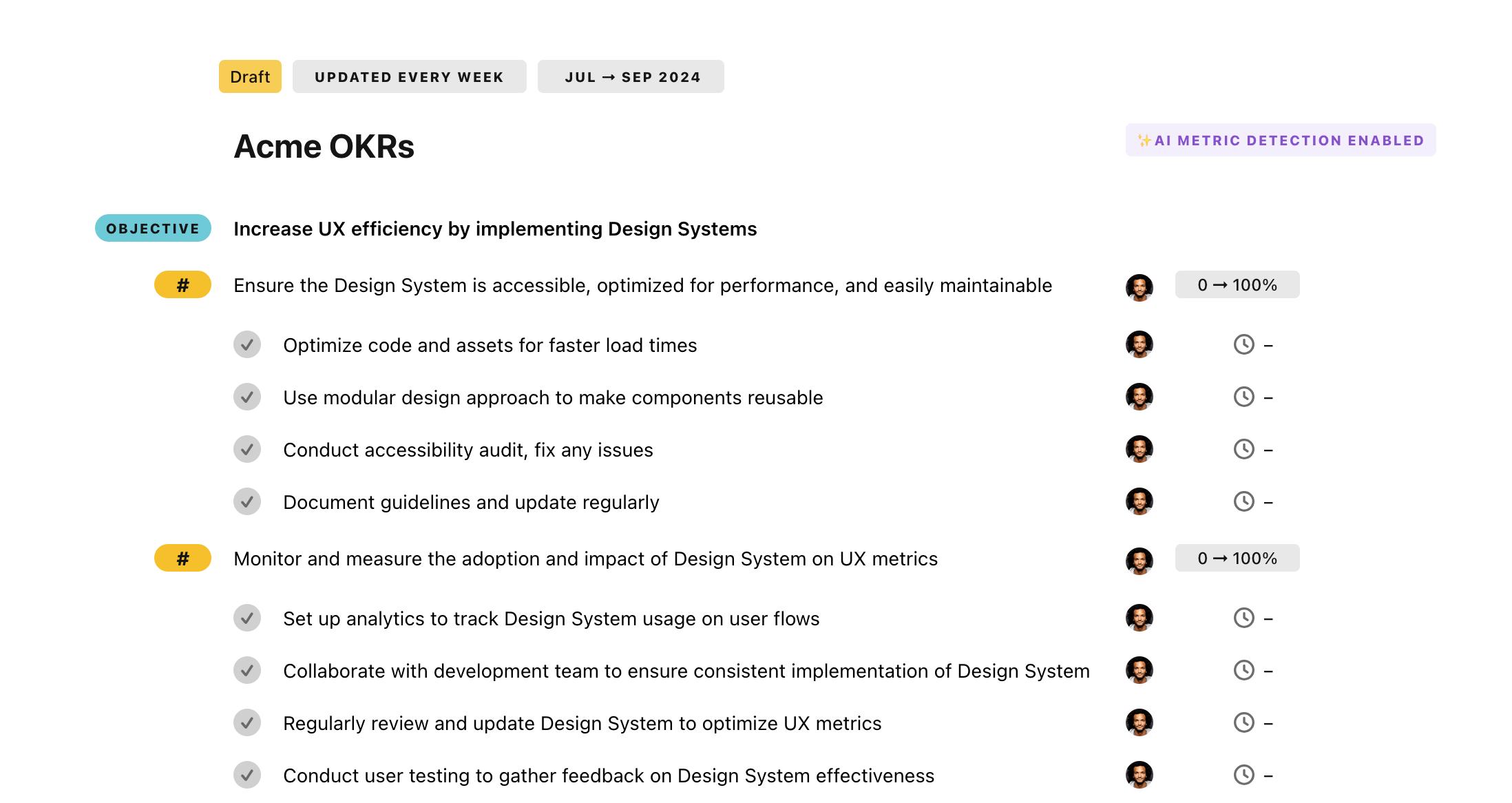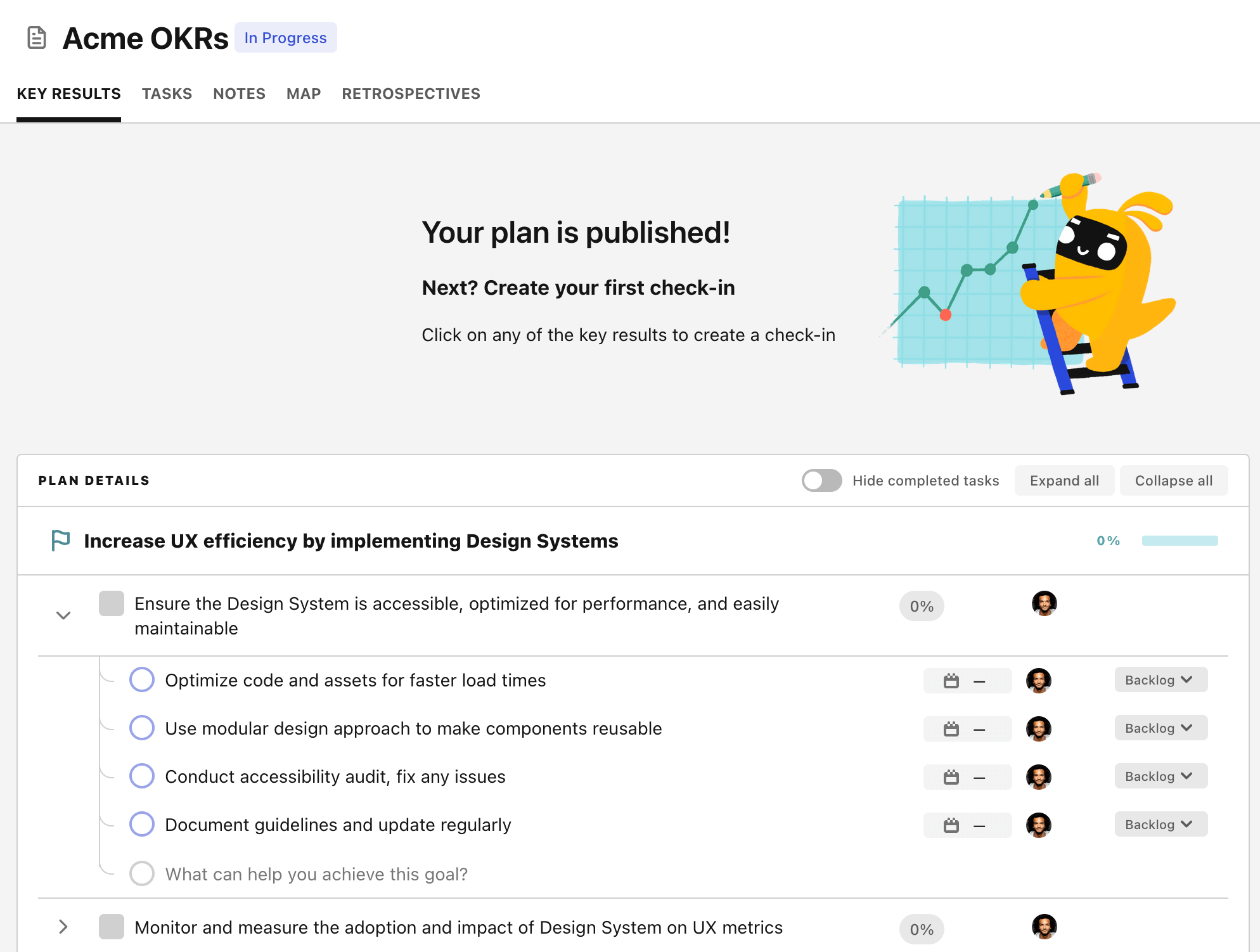OKR template to increase effectiveness and efficiency of sales pipeline management
Your OKR template
The second objective is to trim the sales cycle length by process optimization. This 15% reduction can be realized by reviewing and smoothing the existing sales process stages, executing an efficient customer relationship management system for sales, and educating the sales team about the optimized process.
The third objective is to heighten the count of eligible leads by 20%. This target can be met by introducing targeted marketing campaigns, bettering the website's search engine optimization to navigate organic leads, and refining the lead qualification process.
Overall, the OKR is focusing on streamlining the sales process and making it more effective. This involves several phases: attracting leads, converting these leads into customers, and ensuring the process is as efficient and optimal as possible.
ObjectiveIncrease effectiveness and efficiency of sales pipeline management
KRImprove conversion rate of leads to sales by 10%
Enhance product descriptions and sales copy
Train sales team in effective conversion techniques
Implement a follow-up system for engaging and nurturing leads
KRShorten sales cycle duration by 15% through process optimization
Review and streamline existing sales process stages
Implement an efficient CRM system for sales
Train sales team on optimized process
KRIncrease the number of qualified leads in the pipeline by 20%
Implement targeted marketing campaigns
Improve website's SEO to drive organic leads
Optimize our lead qualification process
How to edit and track OKRs with Tability
You'll probably want to edit the examples in this post, and Tability is the perfect tool for it.
Tability is an AI-powered platform that helps teams set better goals, monitor execution, and get help to achieve their objectives faster.
With Tability you can:
- Use AI to draft a complete set of OKRs in seconds
- Connect your OKRs and team goals to your project
- Automate reporting with integrations and built-in dashboard
Instead of having to copy the content of the OKR examples in a doc or spreadsheet, you can use Tability’s magic importer to start using any of the examples in this page.
The import process can be done in seconds, allowing you to edit OKRs directly in a platform that knows how to manage and track goals.
Step 1. Sign up for a free Tability account
Go tohttps://tability.app/signup and create your account (it's free!)
Step 2. Create a plan
Follow the steps after your onboarding to create your first plan, you should get to a page that looks like the picture below.

Step 3. Use the magic importer
Click on Use magic import to open up the Magic Import modal.
Now, go back to the OKR examples, and click on Copy on the example that you’d like to use.

Paste the content in the text import section. Don’t worry about the formatting, Tability’s AI will be able to parse it!

Now, just click on Import from text and let the magic happen.

Once your example is in the plan editor, you will be able to:
- Edit the objectives, key results, and tasks
- Click on the target 0 → 100% to set better target
- Use the tips and the AI to refine your goals
Step 4. Publish your plan
Once you’re done editing, you can publish your plan to switch to the goal-tracking mode.

From there you will have access to all the features that will help you and your team save hours with OKR reporting.
- 10+ built-in dashboards to visualise progress on your goals
- Weekly reminders, data connectors, and smart notifications
- 9 views to map OKRs to strategic projects
- Strategy map to align teams at scale